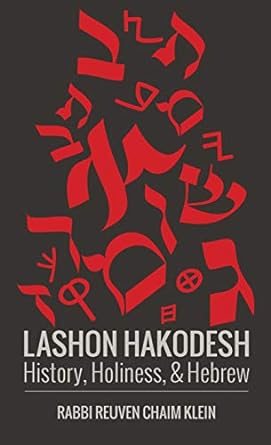By Rabbi Reuven Chaim Klein
The Talmud (Shabbat 49b, 73b-74b, 96b) teaches that the thirty-nine forms of labor that are forbidden on Shabbat reflect the thirty-nine sorts of creative crafts used in the construction of the Tabernacle and its paraphernalia. One of those is known as tzovea—the act of “coloring/dyeing” (Mishnah Shabbat 7:2, 13:4). That labor entails taking an uncolored material and placing it within some colored substance that will cause the material to change color. In Hebrew, the general term for “color” is tzeva, a word derived from the verb tzovea.
Let’s begin with the word tzeva. Its root tzadi-bet-ayin does not appear in the Pentateuch, but does appears four times in Biblical Hebrew. For example, when Sisera’s mother fantasized that her son will have defeated the Jews and will take from them various prizes of war, she imagines tzevaim among those spoils (Jud. 5:30). That particular verse uses inflections of this root three times. Radak (to Jud. 5:30) explains that tzevaimrefers to “colorful clothing,” that is, a single article of clothing that is made of many colors. Likewise, Jeremiah wonders whether the Jewish People are like a “colorful” (tzavua) bird of prey who is hated by all the other birds (Jer. 12:9). These four examples are the only times that derivatives of tzadi-bet-ayin appear in Biblical Hebrew (except for perhaps the given name Zibeon in Gen. 36 and the place-name Zeboim in Neh. 11:34, I Sam. 13:18).
Various inflections of tzeva appear in the Mishnah in many different contexts, like when discussing what happens when one gives wool to be “dyed” one color, and the hired hand “dyes” it a different “color” (BavaKamma 9:4), what happens if one “dyes” a garment with peels from fruits that are orlah (Orlah 3:1), and how to tell when a spot of red colorization is blood or simply paint (Niddah 9:6). The term also appears in various other contexts in Rabbinic literature. For example, when the Midrash (Tanchuma Tazria §2; see also Bereishit Rabbah§7:4) states that the peacock has thirty-hundred and sixty-five colors, it refers to the peacock’s “types of tzivonim.” Additionally, people who are “superficial” or even “duplicitous” are sometimes called tzavua(literally, “colored”) because, as Rashi (to Sotah 22b) explains, the “color” of their outside veneer does not match what is really inside of them.
In Biblical Aramaic and Targumic Aramaic, the root tzadi-bet-ayin assumes a totally different meaning: “immersing/soaking/submerging” (for Biblical examples see Dan. 4:12, 4:20, 4:22, 4:30, 5:21; for Targumic examples, see Targum to Lev. 4:6, 11:25, 15:17). This meaning is seemingly unrelated to the meaning of the Hebrew tzadi-bet-ayin in reference to “color.” Nonetheless, Rabbi Yehoshua Steinberg of the Veromemanu Foundation explains that the core meaning of this Aramaic root does indeed refer to “dyeing,” but that since that process is achieved through soaking the material in a dye solution, this root also came to refer to all acts of “soaking.” Indeed, this explanation is also implied by Menachem Ibn Saruk in Machberet Menachem and Rabbi Natan of Rome in Sefer HeAruch who list both of these meanings under the root tzadi-bet-ayin, without clarifying that they are two separate meanings as they normally would do.
Dr. Alexander Kohut in HeAruch HaShaleim asserts that tzadi-bet-ayin is related to tet-bet-ayin, which means “sinking/drowning,” but also “stamping” and “nature.” This connection is seemingly predicated on the interchangeability of the letters tzadi and tet. The way he presumably understands the link is that the process of “dyeing” involves “immersing” an object in liquid, much like something that “sinks” or “drowns” in water. This connection is further supported by the idea that dyeing imprints a lasting color onto a material, analogous to the way stamping leaves a permanent mark. Additionally, the root tet-bet-ayin carries the meaning of “nature” (teva) in the sense of something being ingrained or inherent, just as a dyed fabric absorbs color in a way that it becomes an inseparable part of its essence.
This article has been excerpted from its original. To read the full version, visit 5tjt.com/terumah-color-me. For other essays about colors, see “The True Blue” (Mar. 2019), “The Color Purple” (Feb. 2022), and “White is Light” (Dec. 2023).
Rabbi Reuven Chaim Klein is an author and freelance researcher based in Beitar Illit. He studied in Yeshiva Gedolah of Los Angeles, the Mir Yeshiva in Jerusalem, and Beth Medrash Govoha of America in Lakewood, and received semichah from leading rabbis. He also holds an MA in Jewish Education from Middlesex University/London School of Jewish Studies. Rabbi Klein authored two popular books that were published by Mosaica Press, as well as countless scholarly articles published in various venues. His articles on Hebrew synonyms are commissioned by Yeshivas Ohr Somayach in Jerusalem and have appeared on their website since 2016.














